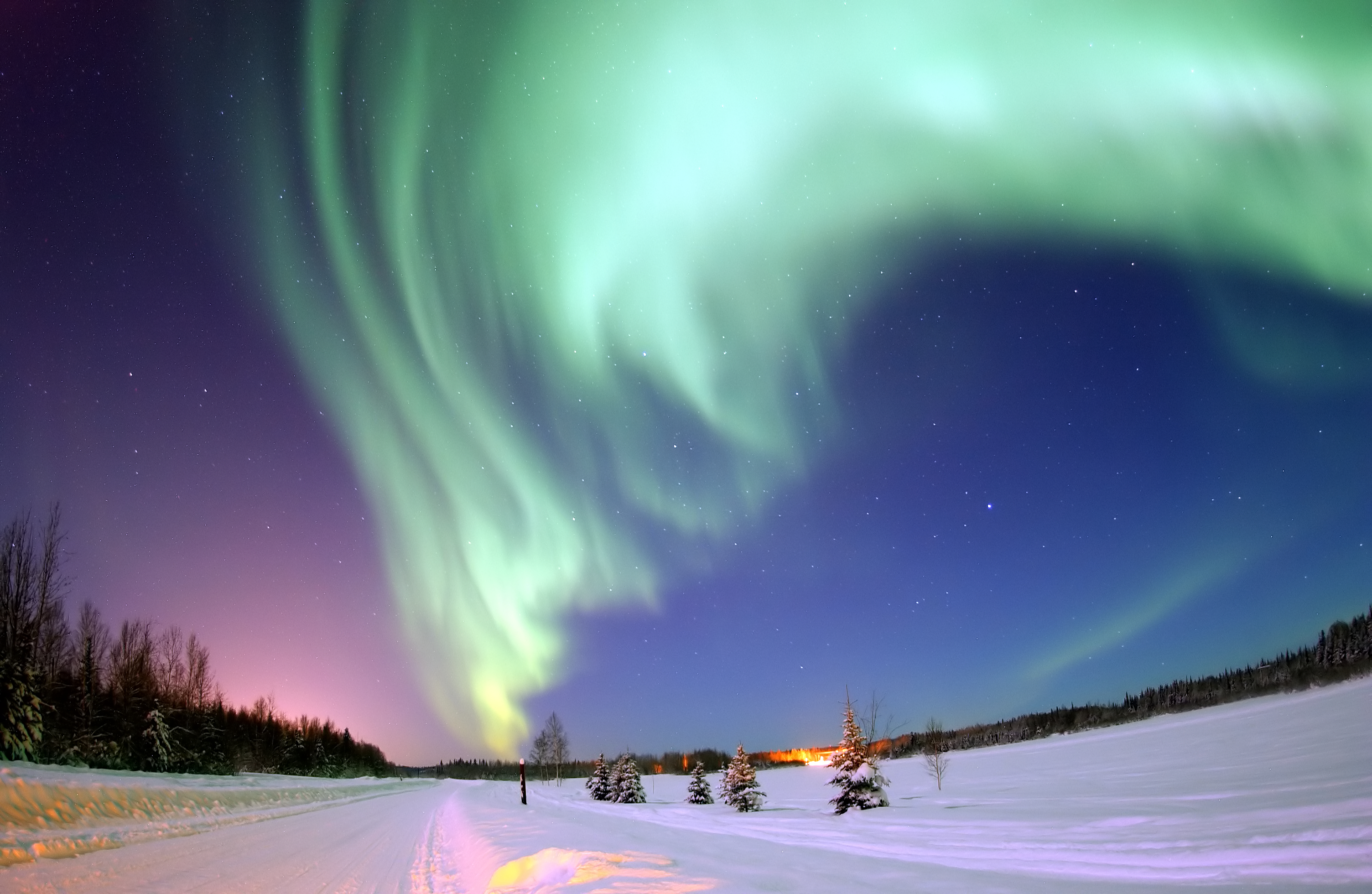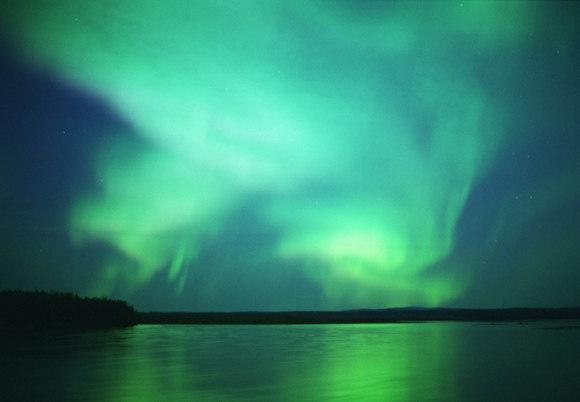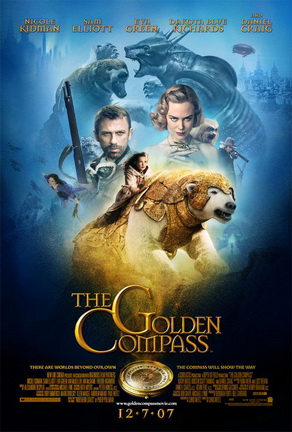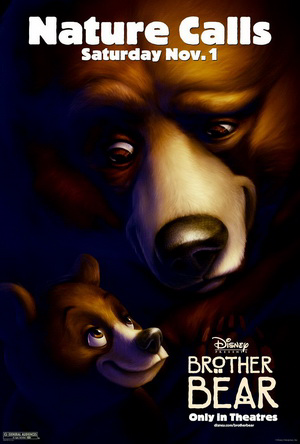
Seven
Natural Wonders of the World:
Aurora
Auroras
(north/south polar lights; or aurorae) are natural light
displays in the sky, usually observed at night,
particularly in the polar regions. They typically occur in the
ionosphere. They are also referred to as "polar auroras". In
northern latitudes, the effect is known as the aurora borealis, and
it was named after the Roman goddess of dawn, Aurora, and the Greek
name for north wind, Boreas by Pierre Gassendi in 1621.
The aurora borealis is also called the northern polar lights, as it
is only visible in the sky from the Northern Hemisphere, the chance
of visibility increasing with proximity to the north magnetic pole,
which is currently in the arctic islands of northern Canada.
Aurorae seen near the magnetic pole may be high overhead, but from
further away, they illuminate the northern horizon as a
greenish glow or sometimes a faint red, as if the
sun was rising from an unusual direction. The aurora borealis most
often occurs from September to October and from March to April. The
Cree call this phenomenon the Dance of the Spirits.

Auroral
Mechanism
Aurorae are
produced by the collision of charged particles from Earth's
magnetosphere, mostly electrons but also protons and heavier
particles, with atoms and molecules of Earth's upper atmosphere.
The particles have energies of 1 to 100 keV. They originate from
the Sun and arrive at the vicinity of Earth in the relatively
low-energy solar wind. When the trapped magnetic field of the solar
wind is favourably oriented it connects with Earth's magnetic
field, and solar particles enter the magnetosphere and are swept to
the magnetotail. Further magnetic reconnection accelerates the
particles towards Earth.

Origin
The ultimate
energy source of the aurora is the solar wind flowing past the
Earth. The magnetosphere and solar wind consist of plasma (ionized
gas), which conducts electricity. It is well known that when an
electrical conductor is placed within a magnetic field while
relative motion occurs in a direction that the conductor cuts
across, rather than along, the lines of the magnetic field, an
electrical current is said to be induced into that conductor and
electrons will flow within it.
The amount of current flow is dependent upon a) the rate of
relative motion and b) the strength of the magnetic field, c) the
number of conductors ganged together and d) the distance between
the conductor and the magnetic field, while the direction of flow
is dependent upon the direction of relative motion. Dynamos make
use of this basic process ("the dynamo effect"),
any and all conductors, solid or otherwise are so affected
including plasmas or other fluids.
In
Literature and Film
The aurora
features prominently in Philip Pullman's Northern
Lights, and in the film adaptation, The Golden
Compass. Characters in the story can sometimes see
glimpses of another universe through the lights.
The Northern Lights are featured in the Disney movie
Brother Bear as the source of changes in the
world. They are said to be the spirits of every living creature's
ancestors.
The aurora sets the events of the 2000 film
Frequency in motion.



Reference / Image
Credits:
Wikipedia
1.
Wikimedia
2.
Wikimedia
3. James N.
Sears
4.
Wikimedia
5.
Wikimedia
6. Wikimedia
Post Comments